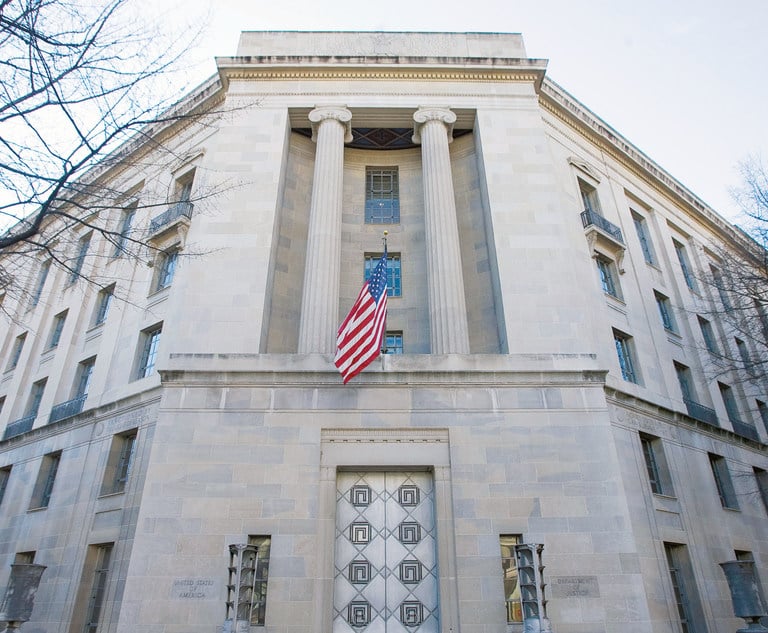Misusing provisional patent applications
Provisional patent applications have a legitimate purpose to provide a place holder when you have no time to properly prepare a full utility application.
December 03, 2013 at 03:00 AM
4 minute read
The original version of this story was published on Law.com
How did the use of provisional applications go awry? They were never intended to be, and are not, a substitute for a fully-prepared (i.e., utility) patent application. A provisional application is not a poor man's patent, which it has been called, especially since it is not a patent, can never mature into a patent and confers no enforceable rights. Provisional applications were created with good intentions and yield valuable benefits when used properly, but they have been misused — unintentionally by the unknowledgeable and intentionally by hucksters in search of a buck.
Provisional applications are not low-cost substitutes for utility applications
Provisional applications are often improperly used as low-cost substitutes for utility applications. The problem with this “cost savings” approach is that a down-and-dirty provisional application, often with few drawings, limited written description and few or no claims, creates what some refer to as a false sense of security because the provisional application's owner assumes the invention is protected. Nothing could be further from the truth. A provisional application only serves its purpose if it includes sufficient detail to fully (a) protect the invention against disclosure to others, and (b) support any U.S. utility application and/or foreign application claiming priority to the provisional application. A sketchy provisional application does neither.
With this false sense of security, the inventor may talk openly about the invention and even show the provisional application to others. What the inventor fails to realize is that anything not described in the provisional application is fair game for others to copy; disclosing information not described in the provisional application can lead to the loss of patent rights and a sketchy provisional is hardly going to impress potential investors. On the contrary, not only will a sketchy provisional application carry little weight with investors, it reflects poorly on your entire business plan and personal level of sophistication. If your business's intellectual property is half-heartedly protected with little thought or care, investors may assume other aspects of your business have been treated in the same fashion.
The true purpose of provisional applications
Provisional applications were introduced in the U.S. on June 8, 1995 with one primary purpose: To preserve at least some ability to obtain patent rights if you have a looming deadline, have no time to prepare a proper utility application and require an informal mechanism to file something quickly, scraping together as much information as time allows. A provisional application is a one-year place holder, providing no rights other than the ability to claim priority to its filing date. If time is not a factor, a provisional application should be prepared with the same care and detail as a standard utility application.
If a provisional application is properly prepared, it can also be used strategically to provide the following benefits:
- Phase shifting, which means the term of any resulting patent is measured from the utility application filing date and not the provisional application filing date. In essence, the term of your patent can extend for up to one additional year, or twenty-one years from its provisional filing date.
- U.S. prosecution costs are incurred later, or not at all, because the U.S. utility application can be filed up to a year after the filing of the provisional application. During the one-year provisional application period you can determine if the invention is worth the added costs of pursuing a utility application.
Conclusion
Provisional patent applications have a legitimate purpose — to provide a place holder when you have no time to properly prepare a full utility application. More sophisticated practitioners also know how to use provisional application procedures to phase shift and defer prosecution costs. Skimpy provisional applications used to save a buck in the short run are a waste of time and money. Either do it right or do not do it at all.
This content has been archived. It is available through our partners, LexisNexis® and Bloomberg Law.
To view this content, please continue to their sites.
Not a Lexis Subscriber?
Subscribe Now
Not a Bloomberg Law Subscriber?
Subscribe Now
NOT FOR REPRINT
© 2025 ALM Global, LLC, All Rights Reserved. Request academic re-use from www.copyright.com. All other uses, submit a request to [email protected]. For more information visit Asset & Logo Licensing.
You Might Like
View All
Ex-Starbucks GC Exiting Latest Role, Will Get Severance


Advance Auto Parts Hires GC Who Climbed From Bottom to Top of Lowe's Legal Department
2 minute read
Trending Stories
- 1Ex-Starbucks GC Exiting Latest Role, Will Get Severance
- 2Family Law Special Section 2025
- 3We Must Uphold the Rights of Immigrant Students
- 4Orrick Picks Up 13-Lawyer Tech, VC Group From Gunderson Dettmer
- 5How Alzheimer’s and Other Cognitive Diseases Affect Guardianship, POAs and Estate Planning
Who Got The Work
J. Brugh Lower of Gibbons has entered an appearance for industrial equipment supplier Devco Corporation in a pending trademark infringement lawsuit. The suit, accusing the defendant of selling knock-off Graco products, was filed Dec. 18 in New Jersey District Court by Rivkin Radler on behalf of Graco Inc. and Graco Minnesota. The case, assigned to U.S. District Judge Zahid N. Quraishi, is 3:24-cv-11294, Graco Inc. et al v. Devco Corporation.
Who Got The Work
Rebecca Maller-Stein and Kent A. Yalowitz of Arnold & Porter Kaye Scholer have entered their appearances for Hanaco Venture Capital and its executives, Lior Prosor and David Frankel, in a pending securities lawsuit. The action, filed on Dec. 24 in New York Southern District Court by Zell, Aron & Co. on behalf of Goldeneye Advisors, accuses the defendants of negligently and fraudulently managing the plaintiff's $1 million investment. The case, assigned to U.S. District Judge Vernon S. Broderick, is 1:24-cv-09918, Goldeneye Advisors, LLC v. Hanaco Venture Capital, Ltd. et al.
Who Got The Work
Attorneys from A&O Shearman has stepped in as defense counsel for Toronto-Dominion Bank and other defendants in a pending securities class action. The suit, filed Dec. 11 in New York Southern District Court by Bleichmar Fonti & Auld, accuses the defendants of concealing the bank's 'pervasive' deficiencies in regards to its compliance with the Bank Secrecy Act and the quality of its anti-money laundering controls. The case, assigned to U.S. District Judge Arun Subramanian, is 1:24-cv-09445, Gonzalez v. The Toronto-Dominion Bank et al.
Who Got The Work
Crown Castle International, a Pennsylvania company providing shared communications infrastructure, has turned to Luke D. Wolf of Gordon Rees Scully Mansukhani to fend off a pending breach-of-contract lawsuit. The court action, filed Nov. 25 in Michigan Eastern District Court by Hooper Hathaway PC on behalf of The Town Residences LLC, accuses Crown Castle of failing to transfer approximately $30,000 in utility payments from T-Mobile in breach of a roof-top lease and assignment agreement. The case, assigned to U.S. District Judge Susan K. Declercq, is 2:24-cv-13131, The Town Residences LLC v. T-Mobile US, Inc. et al.
Who Got The Work
Wilfred P. Coronato and Daniel M. Schwartz of McCarter & English have stepped in as defense counsel to Electrolux Home Products Inc. in a pending product liability lawsuit. The court action, filed Nov. 26 in New York Eastern District Court by Poulos Lopiccolo PC and Nagel Rice LLP on behalf of David Stern, alleges that the defendant's refrigerators’ drawers and shelving repeatedly break and fall apart within months after purchase. The case, assigned to U.S. District Judge Joan M. Azrack, is 2:24-cv-08204, Stern v. Electrolux Home Products, Inc.
Featured Firms
Law Offices of Gary Martin Hays & Associates, P.C.
(470) 294-1674
Law Offices of Mark E. Salomone
(857) 444-6468
Smith & Hassler
(713) 739-1250






